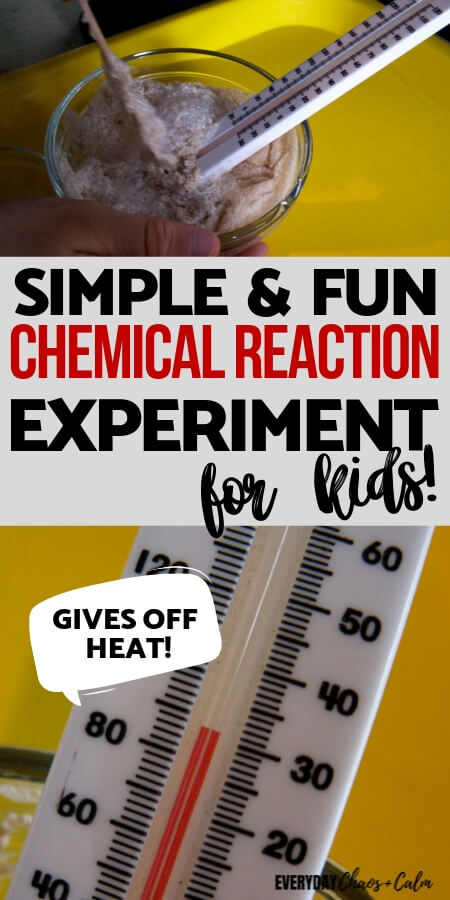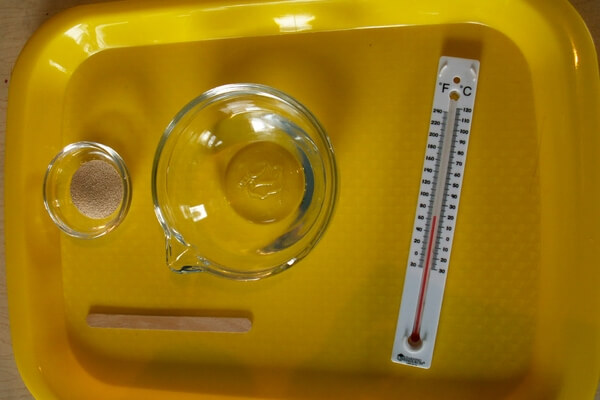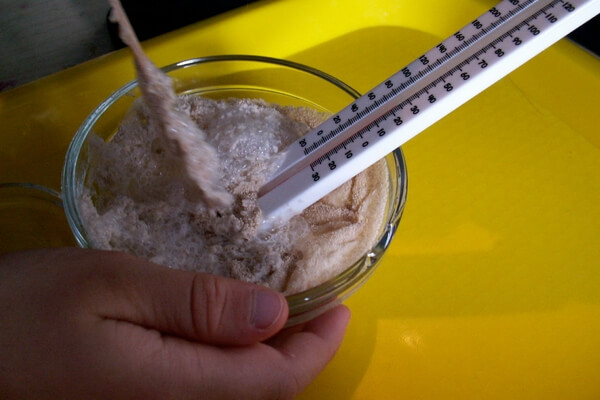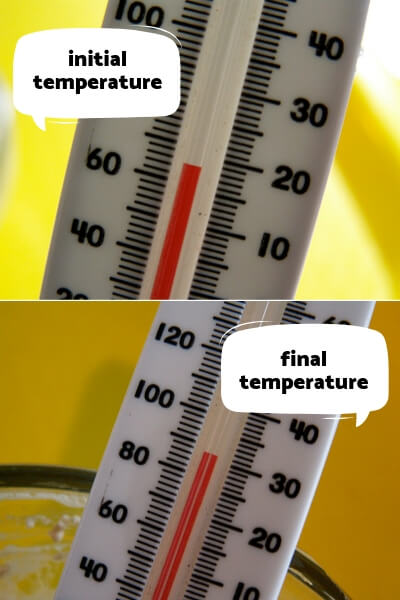Looking for a fun chemistry experiment for your kids? Try this chemical reaction experiment that shows how chemical reactions produce heat!
Chemistry is so much fun to learn about as kids. And giving your kids the opportunity to interact and learn about chemistry in a hands on way is so important to their learning.
** This website contains affiliate links. If you make a purchase using one of these links, I may earn a commission. Please click here for more information about cookies collected and our privacy policy **.
Simple chemistry experiments give young kids the chance to really think about what might occur and it gives them a chance to use the scientific method!
Here is a simple experiment that shows a chemical reaction and produces heat!

A Simple Chemical Reaction Experiment for Kids That Gives Off Heat!
So the first step of any science experiment, is to give some background information. In this case you should have a discussion before completing the experiment about the difference between a chemical and physical reaction.
In a physical reaction the molecules undergo a physical change but they do not become something new. Such as, you can melt ice into water by applying heat, but it is still H20 and can be formed back into ice.
Crushing a can, changes it’s physical shape but it is still a can. Even mixing sugar and water is a physical change because you can get the sugar back out of the water through evaporation.
In a chemical reaction however, something new is made. The molecules undergo a chemical change and are altered and can’t be returned to their original state.
Tell your kids that the main signs that a chemical reaction has occurred are:
- a gas is formed
- there is a color change
- there is a change in temperature
- a solid is formed
- light or odor is given off
If they observe any of these signs, a chemical reaction has taken place.
For reference I did this experiment with a 2 year old, a 4 year old, a 6 year old, and an 8 year old. They all got something out of it and all enjoyed it.

Supplies for this Chemical Reaction Experiment
Now that you have given some background, it’s time to set up your experiment. For this experiment you need the following:
- 1 tsp of yeast
- 1/4 cup of hydrogen peroxide
- a stirring stick
- a thermometer
- a small bowl
Set all of the materials out on the table, but before starting the experiment ask your kids to make a guess as to what might happen.
Ask them to make a hypothesis and tell if they think a chemical reaction or a physical reaction will occur.
Now it’s time to have some fun!

Steps to Performing this Simple Chemical Reaction Experiment
Step 1: Pour the hydrogen peroxide into your bowl.
Step 2: Using the thermometer, measure the temperature of the peroxide. Let the temperature stabilize and then record the initial temperature of the peroxide.
If you are working with small kids, doing one experiment and write down all the guesses and data on a large dry erase board for all to see. If you are working with older kids, it might be fun for them each to perform their own experiment.
Step 3: Keep the thermometer in the bowl and pour the yeast into the bowl and stir well.
Ask your kids for what they are observing. They should see some bubbling and fizzing- which is a clue that a gas is being formed. This is a sign that there is a chemical reaction.
Make sure your kids are watching the thermometer too. They should see that the temperature is rising.
They can also feel the outside of the bowl to physically feel the temperature change.
Step 4: Record the final temperature of the mixture.

What Does This Chemical Experiment Teach?
Once you have finished the experiment have a discussion about what you observed and learned. Ask lots of questions!
What kind of reaction occurred? How do they know?
Was their hypothesis right?
What do they think made the temperature rise?
They may even think of other things they can mix together and test if a chemical change has occurred!
Other Science Experiments and Activities for Young Kids:
Simple Acids and Bases Experiment for Kids
Dancing Popcorn (Using the chemical reaction between baking soda and vinegar to make popcorn dance!)
Make Slime (YES! Slime is a chemical reaction- a solid forms!)
Oil and Water Sensory Bag– Perfect for the smallest scientists!


